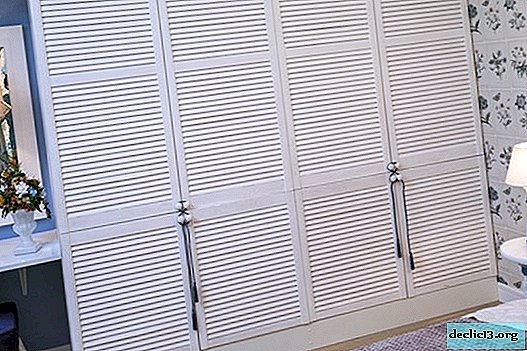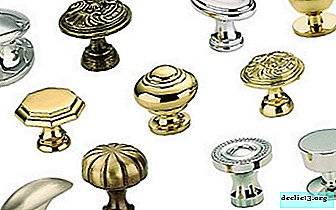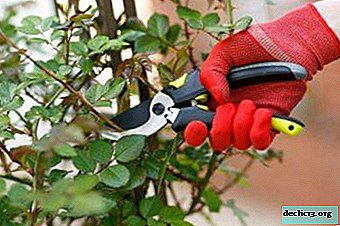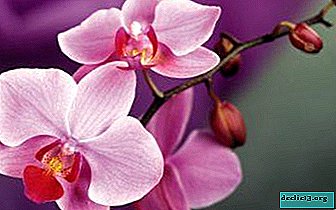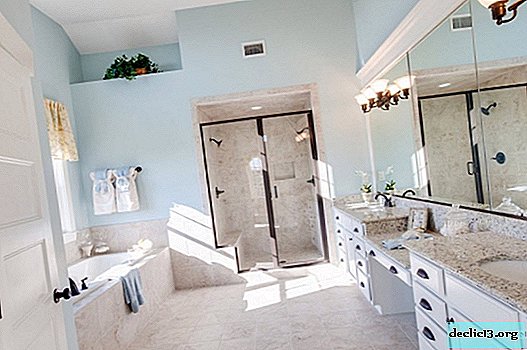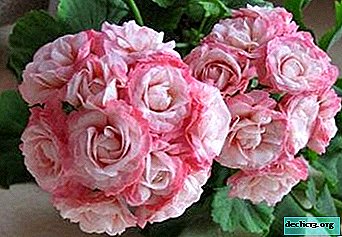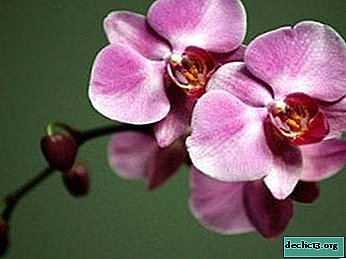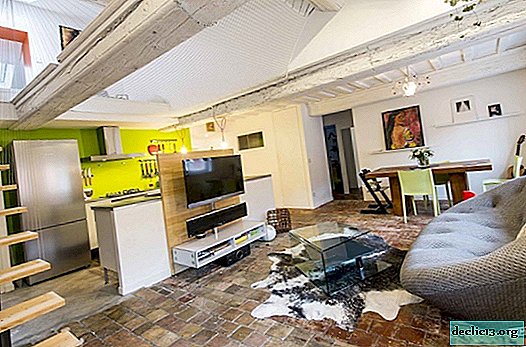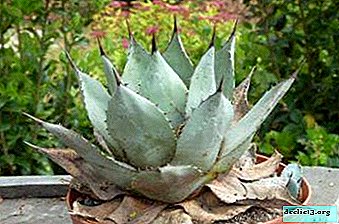We find out why the Decembrist does not bloom, as well as what to do to solve this problem.
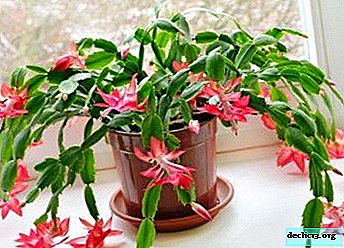
Flower Schlumberger can easily be found on the windowsills of almost every apartment.
After all, one look at this bright, multi-colored plant is enough, and the spleen disappears, which, as a rule, arises in anticipation of spring.
Not every indoor flower blooms in winter, and this is its peculiarity. The Decembrist is not particularly demanding, but if you violate the primitive rules for leaving, he may well refuse to bloom.
Why does zigocactus “rebel” in winter?
Zygocactus blooms once a year, from December to January. This is due to the genetic characteristics of epiphytic cacti.What if the Decembrist is not going to bloom at the beginning of winter? It is necessary to find the objective reason for such a failure.
Problems may be as follows:
- not enough light;
- large pot;
- wrong watering mode;
- nutritional deficiencies;
- non-compliance with the temperature regime;
- dry air
- damage to the flower by diseases or pests.
You can find out why Decembrists do not bloom in a separate article.
The effect of seasonality on the plant
 Care for the Decembrist depends on the changing seasons. Each month corresponds to a specific plant life cycle.
Care for the Decembrist depends on the changing seasons. Each month corresponds to a specific plant life cycle.
- January. At this time, the plant is actively flowering. He needs regular watering so that the top layer is constantly wet. Spraying and fertilizing zigocactus with mineral fertilizers will not interfere. It is best to choose drugs, namely, for flowering plants. You can not rearrange the flower from place to place, otherwise it can lose buds. Read more about why Decembrist drops buds here.
- February March. The Decembrist is exhausted after flowering, he needs peace to restore strength. Dry, faded flowers should be removed. It is also important to transfer it to a cool room with an air temperature of + 13-15 ° C and a humidity of 50-70%. Water 1 time in 10-14 days.
- April. Vegetation period. Restore feeding mode. It is better to start with nitrogen and phosphorus fertilizers once a month. Moisten the flower with plenty. Sunlight should be shaded so that there are no thermal burns. At the end of the month, the Decembrist can be propagated and transplanted. A young flower is transplanted annually, and an adult individual once every 5 years. If necessary, in April they perform crown formation, remove unnecessary shoots to stimulate further growth. The optimum room temperature for this month is + 18-20 ° C.
- May June July August. It was a warm time. Schlumberger can be taken out to a balcony or an open terrace. It is advisable to choose a place in partial shade. Water after drying of the topsoil. Feeding every two weeks.
- September October. Decembrist resting before future flowering. It should be moved to a room with a temperature of + 13-15 ° C. Do not feed and minimize watering.
- November. Preparing for future flowering. Room temperature should be raised to + 20 ° C. Moisturize the plant now more often, mainly with warm, standing water. In this month, buds begin to hatch, so it is not advisable to touch the zygocactus.
- December. The time has come for flowering Schlumbergera.
How to accelerate the flowering of Christmas at home?
What needs to be done to make the plant bloom?
With the advent of autumn, the air temperature in the street will be significantly lower than in the room. Just the moment when you should leave the plant on the veranda or on the loggia. Necessarily Decembrist should be sheltered from rains and strong winds. You can leave it there for a month. Watering to exclude. It's okay if several segments are affected, wilted.
But with the onset of frost, when the outside temperature drops below + 10 ° C, it is better to take zygocactus into the room. Provide lighting for 10 hours a day. Do not forget to water 2-3 times a week. After 50 days, flowers will appear.
 To achieve the flowering of the Decembrist at home or to accelerate it, basic recommendations should be followed:
To achieve the flowering of the Decembrist at home or to accelerate it, basic recommendations should be followed:
- the process takes longer if the room is cool and humid;
- when the flowers bloom, they must be immediately cut off;
- It is important to renew the soil of the Decembrist with a substrate for succulents.
To have a lot of flowers on the Decembrist, it is recommended to stimulate the plant with top dressing. For bright, lush flowering, phosphorus and potassium are needed. Therefore, starting in April, include minerals in the plant’s diet once a month. In the summer, zigocactus spends most of its energy on growth; accordingly, the amount of fertilizer is important to increase. Top dressing is done twice a month. At the beginning of November - stop making nutrients.
As fertilizers you can use:
- specialized complexes for cacti;
- weakly concentrated mullein;
- ash-based solution (per 1 liter of water 2 tablespoons of ash);
- glucose solution (per 1 liter of water 2 tablespoons of sugar);
- infusion of citrus.
How to make a flower grow and give buds abundantly?
Why does it sometimes happen that a Decembrist does not grow for a long time, sits in place, how to make it bloom? The owner is excited whether he is doing everything right. Primarily, there are a number of reasons for stunting:
- the flower has not been transplanted for more than 5 years;
- planted in improper soil;
- in the process of transplantation, the root system was damaged, the plant is now sick, as a result of which it has stopped growing;
- lack of watering or nutrients;
- little light.
How to care for the Decembrist, so that he fully grew and developed and bloomed? The following measures must be taken:
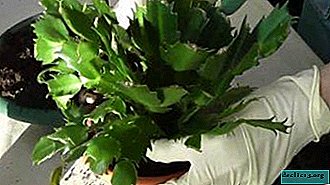 remove the Decembrist from the pot, inspect the roots;
remove the Decembrist from the pot, inspect the roots;- if there are damaged or dry areas - remove them;
- treat sections with an antiseptic, ground cinnamon or sulfur;
- transplant a flower into a rich in minerals, loose soil for cacti;
- change the pot if necessary;
- restore the irrigation system;
- feed with nitrogen fertilizers;
- put the plant in a place with diffused light.
In this case, experienced growers are advised to apply the "dry law". Take the flower to a cool room with a temperature of + 13-15 ° C, and do not water it. After 2-3 weeks, return to a warm place, restore the regime of watering and feeding. After stress, the plant usually lays flower buds.. After 2 months, begins to bloom. Thus, the seasonal cycle can be adjusted so that flowering occurs precisely in the winter.
Errors in the care of Schlumberger and possible diseases
If the Decembrist is not happy with the abundance of buds, blooms poorly, for reasons there are reasons to understand.
- The appearance of a red tick. If orange dots are visible on the base of the flower, then a harmful insect eats up the flower. As a result, it becomes lethargic, segments and buds fall.
Help: first you can try to wipe the Decembrist with a soapy solution, if this does not work, then treat it with an insecticide solution.
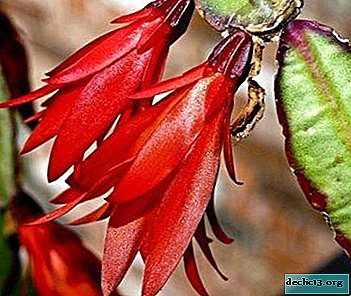 Due to illness. Sometimes Schlumbergera suffers from fungal infections that provoke the development of rot. In this regard, the plant can not fully bloom, loses part of the buds, turgor.
Due to illness. Sometimes Schlumbergera suffers from fungal infections that provoke the development of rot. In this regard, the plant can not fully bloom, loses part of the buds, turgor.Help:
- First of all, you need to inspect the root system, remove the rotten parts.
- Then treat the flower with systemic fungicides and transplant.
- And also cut off the flowers so that the plant spends vitality in the fight against the disease, and not on flowering.
- Incorrect room temperature. Zygocactus flowers fall at a critical air temperature of + 10 ° C and below. But even in a warm room it blooms poorly.
Help: during flowering, the temperature should be maintained at + 15 ° C, then the process will be long and plentiful. For this, the plant needs to be taken out onto a warm balcony, where it is possible to maintain the required parameters, or in a separate room.
Attention! For living rooms, this temperature is not suitable, as a person in these conditions will live uncomfortably. - Nutritional deficiency. Rare and small inflorescences signal a lack of nutrients in the soil. The plant is exhausted. It cannot throw away and feed more buds.
Help: feed with preparations based on potassium or phosphorus. Adhere to the correct diet in accordance with the seasons of the year.
Although Schlumbergera belongs to the Cactus family, this does not mean at all that she loves light and tolerates drought well. On the contrary the most acceptable diffuse lighting and regular watering. And the most important thing to remember is that during flowering you cannot twist and twist the Decembrist.

 remove the Decembrist from the pot, inspect the roots;
remove the Decembrist from the pot, inspect the roots; Due to illness. Sometimes Schlumbergera suffers from fungal infections that provoke the development of rot. In this regard, the plant can not fully bloom, loses part of the buds, turgor.
Due to illness. Sometimes Schlumbergera suffers from fungal infections that provoke the development of rot. In this regard, the plant can not fully bloom, loses part of the buds, turgor.
